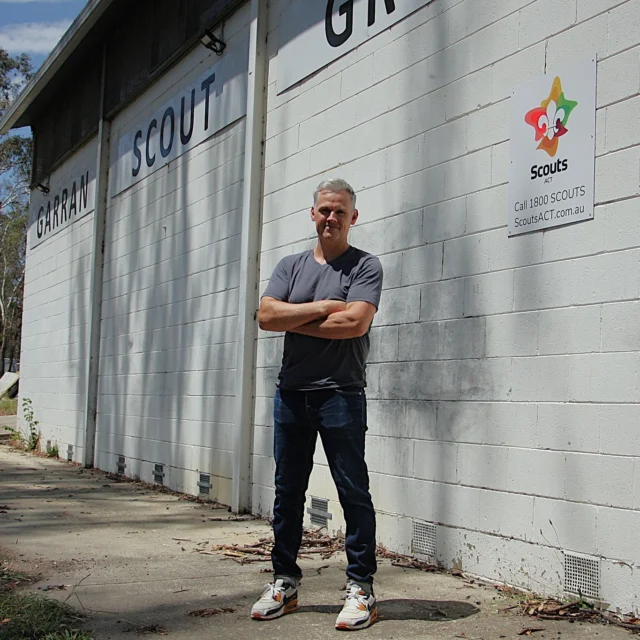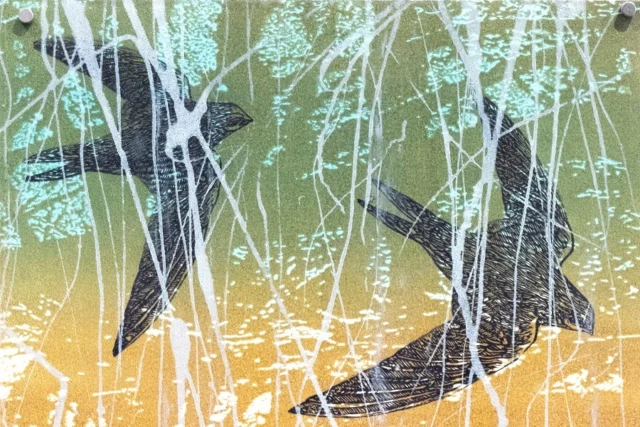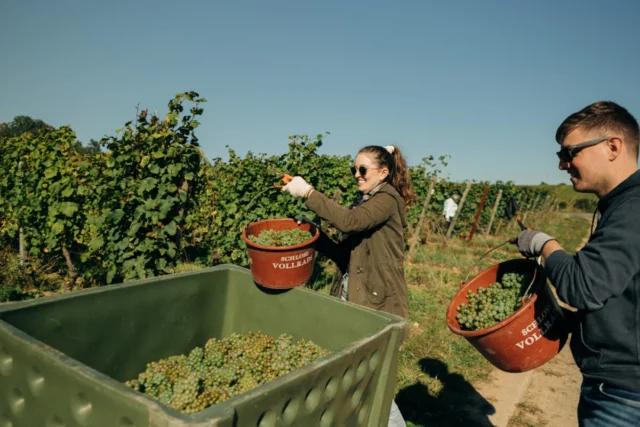
The speeding, roaring, and risk-taking on the tracks and burnout pads at EPIC have a lot to answer for as hoons loom loudly in many other places, says letter writer SUE DYER, of Downer.
Dangerous on-road behaviours are revving up again after Summernats, as cars, motorbikes and trail bikes seek to take over public spaces again with impunity and no consideration of others’ amenity and safety.

The speeding, roaring, and risk-taking on the tracks and burnout pads at EPIC have a lot to answer for as hoons loom loudly in many other places, especially as dusk approaches, and on weekends.
New tyre marks, that curve belligerently over main roads and suburban streets, attest to this.
Those who choose to carry out illegal, life-threatening, and even life-taking idiocies behind the wheel of their own or stolen vehicles create immediate and ongoing economic, health, safety and amenity costs that are borne directly and indirectly by too many others.
These large costs, and others linked to the event’s creation of significant noise and toxic emissions, should be quantified, and factored into the balance sheets of the Summernats’ private business entity and all ACT government agreements and involvements for this event, and made available for public consideration.
The costs of having to lead even more people into our already busy courts and overstretched prison system should not be ignored either.
“Win-win” mantras and other public relations spin are trotted out in true cargo-cult fashion for this outdated event, year after year, by the private Summernats profit taker, and by ACT Labor/Greens ministers and their compliant authorities.
These positions sound hollower and more questionable when annual Summernats problem-solving simply consists of blithely dishing out another set of predictable “There, there….” excuses and adding another flimsy and ineffective Band-Aid to an event that is not appropriate for an increasingly densified urban location and generates unwanted impacts for so many.
Sue Dyer, Downer
Time to prioritise health of vulnerable people
I wholeheartedly agree with retiring ACT Chief Police Officer Neil Gaughan, who recently stated that AFP officers are not trained or equipped to assist people experiencing mental health issues.
A recent media article stated that 40 per cent of police callouts are mental-health related; this is clearly demonstrative of the crisis the ACT community is facing with people experiencing mental health issues/disorders.
While the Police, Ambulance, Clinician, Emergency Response (PACER) program has received positive feedback, it appears that its funding may not be increased to provide another team to resource the stated need for more people at the coalface.
Mental Health Minister Emma Davidson has called for an increase in funding to resource another PACER vehicle and staff. Surely, this is a necessity, particularly given Gaughan’s statement that the presence of AFP officers often doesn’t sit well with many people experiencing mental health issues, disorders and psychotic episodes.
The ACT government’s response to the COVID-19 pandemic was exceptional and many deaths were avoided. However, we are also facing an epidemic of community members experiencing mental health related issues; with a number of these people being harmed or worse, dying.
In simple terms, how can a price be placed on the life of a human being?
It’s time the purse-string holders faced reality and prioritised the health and wellbeing of some of our most vulnerable and marginalised people.
Janine Haskins, Cook
Hypocrisy in government tree advertising
While playing solitaire on my phone, an ad came up from the ACT government. It said: “Help protect trees, so they can protect us”.
Canberra ratepayers forking out for this abysmal government to advertise hypocrisy? Not so funny.
Bec Henson, Hughes
Public servant passes the jargon test
Clive Williams is a very astute observer of “The Canberra Bubble” and its promotion of its self importance.
Although I’m not a public servant or a former one and have no real understanding of the public service, my wife, having been one, tells me all about it in her weekly tirades.
Having enjoyed Clive’s column (“Reaching out to (ie contacting) the jargonauts”, CN January 25), I decided to test her on the jargon.
And would you believe it, she got each one correct. Such is the city which has no middle class and not much understanding of the people outside “The Bubble”.
Hannu Mannering, via email
Gobsmacked at cost of painting roundabout
I am gobsmacked to hear that the Barr government has just spent $16,000 on the rainbow roundabout in Braddon!
Down here in lowly Tuggeranong we can hardly find the roundabouts for the long grass growing along the main thoroughfares. I’m sure that money could have been better spent on mowing than painting a rainbow.
Judy Neal, Richardson
Testing the sensitivity of the editor
On January 5 the main editorial in the Canberra “Harvey Norman” Times had the heading: “It is for voters not judges to stop Trump”.
This implies that Trump is above the law. I decided to test the sensitivity of the editor and his commitment to presenting a balanced viewpoint to his readership, by submitting the following letter on January:
“The Canberra Times editorial of January 5, ‘It is for the voters not judges to stop Trump’, shows a remarkable lack of judgement in my view. After all, who elected Trump in the first place?
“As far as I am concerned, the bulk of Republicans are simply dumb cultists following a cult leader. The thought of Trump once again being president, and in charge of the nuclear button, fills me with dread. For the editor to put faith in voters alone shows complacency at its very worst.”
My letter was not acknowledged or published which is more a reflection on the Canberra Times editor than on me.
Ric Hingee, Duffy
Message in a (plastic) bottle
Although I agree with most of what was written in the article “Saving the wine world, one goon bag at a time” (CN January 25), my main concerns are the loss of flavour to the wine when packaged in recycled plastic.
Its advantages are that it’s lightweight, shatterproof and can be recycled. It may have a lower carbon footprint than glass, especially if made from recycled plastic.
But there are environmental concerns related to plastic pollution. This is shown in the number of plastic bottles floating in the waterways and oceans already. Do we need to add more?
Errol Good, Macgregor
Australia Day date will have to wait
Now that we have survived another Australia Day, we need to reflect on whether it is really appropriate to celebrate the day British colonisation of Australia started.
January 26 for Australia Day was only selected in 1935 and was closely followed by a Day of Mourning on the same day in 1938. It has been contentious for at least 86 years.
Several alternative Australia Days have been suggested. My own favourite is May 8 (Mates Day), in the spirit of everyone getting together and having a holiday.
However, this might be a bit close to the ACT’s Reconciliation Day (May 27 this year), which anyway is probably the more appropriate candidate.
I suspect though we will not be able to change the date until there is majority support for an Australian Republic, based on genuine reconciliation with our First Nations peoples and acceptance of all our more recent immigrants. Only then will Australia have finally come of age.
Richard Johnston, Kingston
Our history ‘corrupted’ by educators
Eric Hunter’s response (Letters, CN February 1) to Ian Pilsner (Letters, CN January 18) on the Australia Day issue is disappointing.
In the cherry-picking style that he derides, he raises the “murderous activities” that were carried out against Aboriginals without reference to Ian Pilsner’s main point about the overriding achievements that started with a small number of convicts, civil and military personnel under Governor Phillip.
If anyone wants a thorough yet compact coverage of Australian history and why it happened, I recommend the short monograph by Anthony Percy (currently the Catholic parish priest of Queanbeyan): “Australia: What Went Right? What Went Wrong?” (Connor Court Publishing, 2022).
He covers the kaleidoscope of Australian history in which our egalitarian democracy developed, with a look to the future.
Percy recognises the “notable exceptions to our pursuit of a free and fair country” that go well beyond our treatment of Australia’s indigenous peoples, “but to this day, few have a political, economic and cultural pulse as strong as Australia’s”.
I agree with Ian Pilsner that our history has been neglected or corrupted by educators over the lifetime of recent generations. It must be restored in primary, secondary and tertiary education. Anthony Percy’s monograph points to the subject matter that should be covered.
John L Smith, Farrer
Lies have always been part of politics
Senator Pocock is on the record of being in favour of attempting to stop lies and misinformation in our political system.
Unfortunately, as Hannah Arendt (Truth and Reality, 1967) has pointed out, lies have always been part of politics.
Arendt also raised the concern that political lies were starting to take a wider scope. She observed they were slowly erasing an accepted reality and facts with a different version of historical “reality” constructed to replace them. The new reality has nothing to do with factual truth and is designed to meet political needs.
This is apparent in the regular demonstrations we see filling our streets in major cities at this time. The bigger, louder and more aggressive and threatening the demonstration, the bigger the lie the protesters are promulgating. They are political activists trying to create a new reality to suit their political ends.
It also strikes me that Prof Rimmer (“As the world heats, why aren’t we ready for it? CN January 18), by selective reporting of weather events, is seeking to install a sense of urgency in her readers… a trail of devastation and despair, honestly!
It certainly creates a colourful image, but not what we have seen in North America or England in the past few weeks. It’s a big planet and you can find data to match whatever narrative you choose.
We need to see objective balanced science from our universities, not political grandstanding.
Malcolm Sherren, Stirling
Covid numbers rise as free RAT tests go
Covid cases are once more on the rise in most parts of the country, particularly in NSW and Victoria, so what does our toytown government do?
It will cease distributing complimentary RAT kits at the end of the month! Although cases have allegedly marginally dropped in the ACT since peaking in November, we apparently still had 139 cases, three deaths and 23 people hospitalised between January 12 to 18.
Covid is far from over, these figures are highly misleading as they are derived from PCR testing which is only given if recommended by a health professional, making them unreliable for statistical purposes .
I was surprised and shocked to read that infectious diseases expert and ANU professor Peter Collignon is backing the decision to stop issuing complimentary RAT kits, saying that their value was “pretty marginal”.
He and the ACT government should instead be encouraging the public to do the right thing by wearing masks, complying with social distancing and also self testing with RAT kits at the slightest sign of symptoms in an effort to stop the disease spreading.
Instead he is advocating that the changes proposed by the government are “sensible” as this brings the ACT in line with “most of the country”. Really?
I believe this to be a retrograde step, as it will discourage the public from self testing, which will in all probability assist in spreading the disease. Why should anyone, lemming like, follow what allegedly “most of the country” is doing?
Mario Stivala, Belconnen
Government should sit up and take notice
I write to endorse the excellent recent columns from Mike Quirk (“Planning transport and transport strategies are deficient”, CN January 18) and Richard Johnston (“Too much power sits in planning bureaucracy, CN January 25).
Mike highlighted the absence of adequate research and analysis to justify the housing demand strategy and the location of future housing stock. Critically, he also pointed to the increase in car dependent development in the ACT, already with the lowest car occupancy of commuter travel of all capital cities.
Richard Johnson’s article about the power of the planning bureaucracy is perhaps even more concerning. The reduction in the scope for the ACT Assembly to have influence on planning policy, as contained in the new planning system, is manifestly wrong. Johnson offers some very good suggestions as to how the current system can be improved, such as through an independent, expert planning panel.
When two very experienced professionals with a deep understanding of the planning and transport issues in the ACT find such significant shortcomings in the governance of our planning system, the government should sit up and take notice.
Colin Lyons, Weetangera
Woke lefties seem to be a protected species
Further to Ian Pilsner’s letter (CN February 1), I couldn’t agree more on both the topics of nuclear power and the ubiquitous Eric Hunter and his prolific writing.
Eric must do nothing else all day, every day, but write letters to all the papers etcetera. But as he keeps reminding readers, he is well into his eighties, so this is probably understandable, as it keeps him occupied.
In relation to The Canberra Times, Eric and a couple of other woke lefty regulars (I don’t think I need to name them!) seem to be a protected species by the editor, because on a few occasions when I have submitted a letter critical of their views, it has not been published.
Thank goodness for CityNews providing some well-needed balance!
Bob McDonald, Weetangera
20 years to build and commission reactors
In the February 1 edition of “City News” there is a continuing battle between reason (Eric Hunter) and selective use of “facts” (Ian Pilsner).
This time, Mr Pilsner is on his nuclear power bandwagon, arguing that because 30 countries are using nuclear reactors for part, or most, of their electricity supply, Australia should follow like an obedient dog.
Mr Pilsner overlooks the fact that, at present, nuclear energy is outlawed in Australia. Apart from the small Lucas Heights medical-isotope reactor, there is no existing infrastructure and a very small number of people with the training, skill, and knowledge to operate, let alone build the number of large nuclear reactors (at least five) that would be necessary to replace all other sources of electricity.
He also overlooks the fact that it would require at least 20 years to draft, debate, and pass the enabling legislation, train the constructors and the reactor staff, build each reactor, and commission it. With the pace of global heating demonstrably accelerating, there is simply not enough time.
Dr Douglas Mackenzie, Deakin
Energy heavy lifting will be done by renewables
Of course, Ian Pilsner (Letters, CN February 1), not everyone is across every development in the global nuclear industry. But there is ample evidence from “experts” that nuclear is a dying industry.
Don’t be fooled by members of the Coalition and others wishing to further distract from the nation’s transition to renewables. They promote nuclear as the essential ingredient in our efforts to reach net zero by 2050.
Yet with no existing nuclear power industry, Australia would be hard pressed to build a reactor within 20 to 40 years. By that time, on all financial, technical and environmental counts, the price will be prohibitive.
Nuclear plants in Britain, France and the US have experienced massive technical delays, budget blowouts and environmental threats such as flooding and temperature rise in “cooling” water.
With water at a premium in Australia, where would a safe siting be, given we now face increased threats of floods and rising sea levels?
In the first eight months of 2023, 74 per cent of all new electricity capacity worldwide was renewable. The International Energy Agency predicts the heavy lifting will be done by renewables, which are 10 times better at CO2 mitigation than nuclear.
Fiona Colin, Malvern East, Victoria
‘Rush’ to renewables is too slow
There’s no doubt Australia’s transition from an electricity grid based on coal to one based on renewables costs money. The challenge is to find the most sustainable pathway.
Coincidentally, on the same day John L Smith’s letter (“Paying a huge price for rushing into renewables”, CN January 25) appeared in CityNews, the energy market operator’s chief executive Daniel Westerman commenting on lower wholesale prices said: “More low-cost renewable energy was generated and wholesale energy prices have fallen a record number of times to zero, and beyond into negative territory.”
While Mr Smith argues that we are “rushing into renewables” the general consensus is that we are going too slow.
Ray Peck, Hawthorn, Victoria
Who can be trusted?
In a world of spin and confusion, there’s never been a more important time to support independent journalism in Canberra.
If you trust our work online and want to enforce the power of independent voices, I invite you to make a small contribution.
Every dollar of support is invested back into our journalism to help keep citynews.com.au strong and free.
Thank you,
Ian Meikle, editor









Leave a Reply